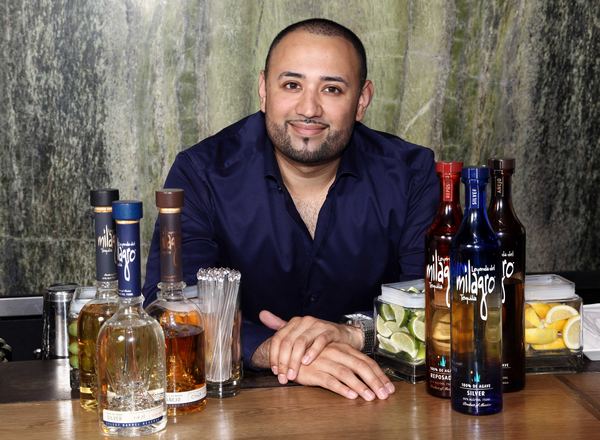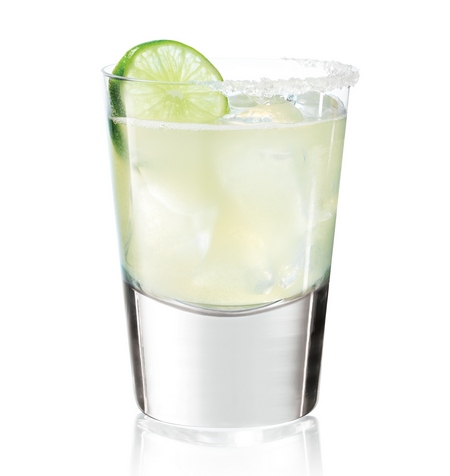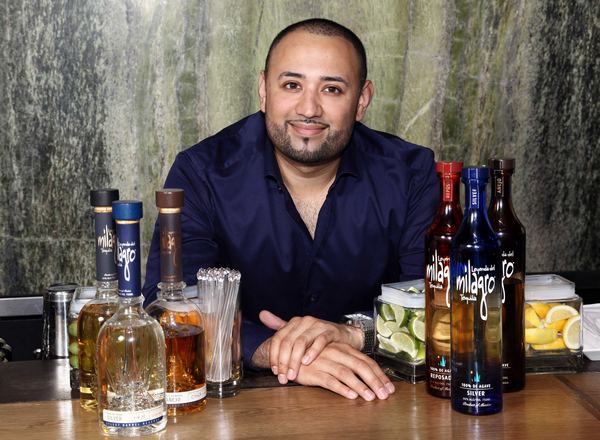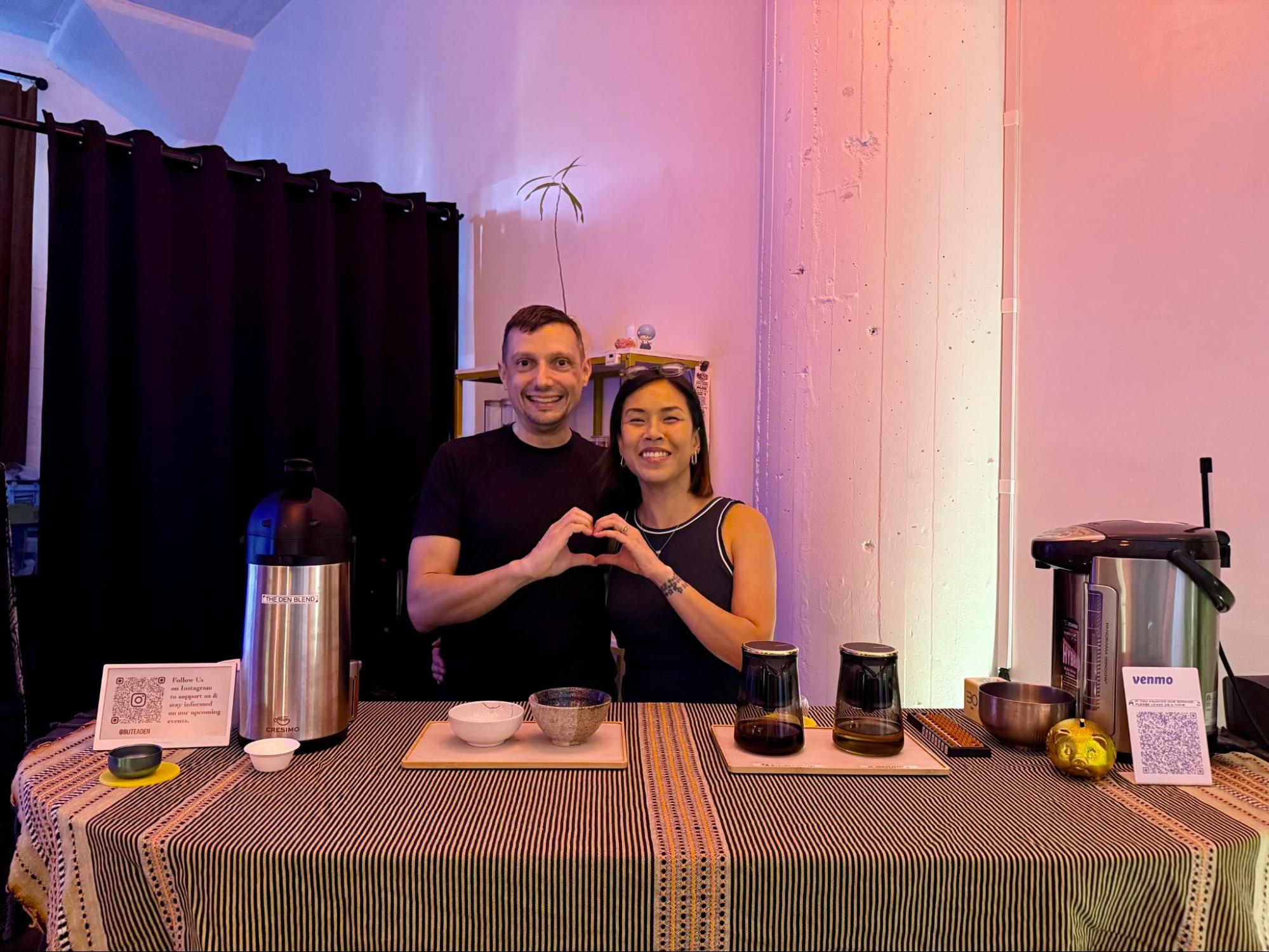
Tonight marks the 200th anniversary of "El Grito" and tomorrow's Mexican Independence Day. To celebrate, TACO took Milagro Tequila up on its offer to lend us San Francisco-raised Jaime Salas, tequila mixologist, collector of over 300 bottles, and the ambassador for Milagro, to ask him what has lead to the recent surge in the spirit's popularity, how to best enjoy the good stuff with and without food, and which misconceptions still linger about tequila. Along the way, Salas uncovers the disturbing trend of the Steve-O-inspired "Chilly Willy pokes a few holes in how tequila gets marketed, and humors us about any rumored "health benefits" of the agave-distilled liquor. Enjoy our Q&A with Salas and a recipe for what he calls "the world's freshest margarita" to get the party started.
What are your own earliest memories of tequila? Whether in Jalisco, Mexico or San Francisco, one constant always remained in my family's parties: Tequila. My uncles would each contribute a bottle of their favorite brand to the party and would constantly argue about which one was better. It was "prepared," as my uncles would say, in many different ways: on the rocks, with soda, etc. I was intrigued, and later began collecting empty discarded tequila bottles I found interesting, whether because of the label, shape or color of the bottle. In my adult years, I quickly gathered an appreciation for the subtle different nuances of each of the tequilas I came across. As my collection grew, so did my love for the spirit.
And how did you become involved with tequila as a profession?
A friend of mine, who at the time worked at an agency that managed the promotion of another spirits brand, asked if I would be interested in being an "Ambassador." I figured that surely there is no such thing, but as you can see, it is in fact a real profession, one I love. I am thankful that I have found a profession that does not feel like work.
How has your own perception of the spirit changed as your appreciation grew? Through my work as Milagro's national tequila ambassador, I've developed a deep appreciation for tequila - it has a long-standing role in the world of spirits as well as the history of Mexico itself. It has come a long way and now stands as a kind of proud Ambassador of Mexico for the rest of the world in a way it never did. While it sometimes still surprises me just how very misunderstood and under-appreciated the spirit truly is, its image is changing slowly, but surely, and I am proud to be a part of that.
Tequila has experienced a huge surge in popularity in the last few years. Is that a result of the industry making a push or something more organic? I think it's a combination of both. As more and more premium and quality brands emerge from Mexico, new consumers are opening themselves up to drinking it. In this way, popularity has increased organically, as tequila connoisseurs now recommend a much broader array of brands for their peers. If you recommend a great tasting tequila to me, and I am not limited to seeking out more equally good tequilas, why wouldn't I try it out? There's nothing more organic than the "word of mouth" recommendation - it's getting recommended that's the hard part! No amount of marketing will sustain popularity in the long run for tequilas that lack substance.
What misconceptions do you think have been erased and which still endure as tequila has become more popular? The biggest misconception is that tequila lives within the nightclub and frat house party scene, existing simply for shooting and mass consumption. In reality, tequila has transcended into a sip-worthy spirit with nuances that are far more pronounced and varied, now that people have access to a broader range of tequila brands to compare and contrast. Unfortunately, many people don't have a clear bench mark as to what to look for when tasting a new tequila. You just have to get away from the "I only drink what I am told is the best" mentality and sample the other great tequilas out there.
It seems like hundreds of brands have hit the shelves in the last few years, making it a giant quandary when perusing the shelves as a customer. Is there anything to look for before opening the bottle to know a brand we're unfamiliar with might have an edge on another? There are quite a few tequilas out in the market which come from the same distillery, yet are crafted completely different. A tequila label is very telling - look for the phrase 100% Blue Agave or 100% de Agave on the label, as well as any literature on the bottle describing the taste profile and nuances. Does it reveal where it comes from? Agave plants grown in the same region have some common characteristics that, depending on its craftsmanship, may be present in the finished product. For example, Milagro tends to have a more fruity, herbaceous taste profile due to pristine agave growing conditions high above in the Jalisco Highlands.
Lastly, look to the professionals. Has it won any accolades? More and more tequilas compete for notoriety these days, but not all make the cut. The high profile spirits competitions gather some of the world's best palettes.
How do you typically recommend people drink tequila to appreciate it the most? Is there anything they shouldn't be doing? To truly appreciate tequila and the nuances of the agave plant, you should drink it neat or on the rocks. That said, nothing beats a great tequila cocktail, if the ingredients complement and heighten the tequila's individual characteristics. You can sip a blanco neat or in an aperitif cocktail to open up the appetite before a meal, or a smoky, dark anejo after dinner.
What flavor profiles in food does the spirit generally work well with? Tequila's versatility is one of the reasons it truly is an amazing spirit. The bright citric fruity notes of a blanco make it blend well with citric juices and agave nectar. When pairing a silver, reposado, or anejo tequila, consider that the richer, more complex, nuances of the aged tequilas require something hearty to add balance. Generally speaking, a silver or blanco goes well with ceviches, white fish, and lighter meats, while reposado goes well with heartier, spicier dishes, such as a mole sauce or steak tartar, believe it or not. Anejos generally go well with rich sauces.
A friend tells us she's seen a surge in popularity for tequila even in Ukraine. Where has tequila become popular and where is it still yet to break in? It's true that tequila has reached some far away corners of the world. In some cases, I am compelled to believe the location may be uninhabited with the exception of [a single] bottle of tequila, no one quite knows just how it got there. Eastern Europe has been a huge consumer of tequila for a long time, mostly mixtos. However, the quality and types of tequila entering these countries is steadily improving. It's also made its way to places like Greece, Brazil, and Australia. Why should Americans be the lucky ones? Tequila is for the world to appreciate.
When it comes to un-aged, 100% pure agave tequilas, what differentiates a blanco from a silver, and even such designations as "Platinum" and "Diamond?" Are some of these just marketing terms? Blanco tequila is most commonly recognized by the CRT (Tequila Regulatory Council), as tequilas that are bottled within 60 days of distillation, with or without contact with wood. Unlike reposados or anejos, the name used to describe blanco tequila is completely left up to the distiller or marketer and is commonly referred to as silver, blanco, or platinum. That said, the word used to describe the tequila isn't as important as its development process.
For example, labeling a tequila "platinum" doesn't make it any better in quality to a "silver"-labeled tequila. I think it's more important to note that, within this expression of tequilas, you can have what I call a "blanco puro" (true white) style tequila or a mellowed one. That's when the distiller takes a white tequila after distillation and stores it in a wood vessel or barrel for no more than 59 days. This mellows out the tequila and incorporates essences of oak and creates a dryer finish. So in a nutshell, not all "blancos" or white tequilas are created equal. Ideally, white tequilas should represent the subtle nuances of the blue agave plant: that rich, spicy vegetal and herbaceous quality that defines tequila.
Do people make their own tequilas like they might other spirits, or is the production too difficult? The process is most definitely difficult but it doesn't deter folks from making their own agave distillate, both commercially and at home. There are companies in California and as far away as South Africa making their own form of the spirit, but since they are producing outside of the designated tequila region in Mexico, they can't label it as such.
What's the strangest trend you have seen in tequila consumption or marketing? I must default to ritualistic consumption trends, such as the "Chilly Willy." I came across this while traveling across the country spreading the good word on Milagro. They were snorting salt, shooting the tequila, and squeezing lime in their eyes. A take on the body shot perhaps?
We've known some viejos who swear that a daily glass of tequila has lead to their longevity. Any health benefits to drinking tequila? Whether real, imagined, or mythic? Do you know my uncles? Although I can’t attest to any health claims, I am a firm believer that if it has worked for you in the past, then stick to it - in moderation, of course.
Salas leaves us with a recipe for what he calls "the world's freshest margarita:"

World’s Freshest Margarita
2 parts Milagro Tequila
1 part Agave Nectar
1 part Fresh Lime Juice
Combine ingredients with ice and shake. Strain over fresh ice in a rocks glass and garnish with a lime wheel. Salt optional.







